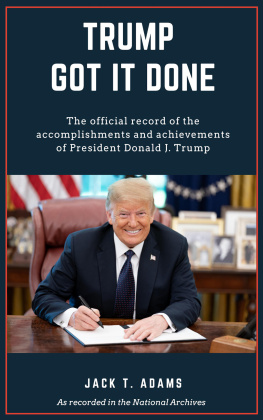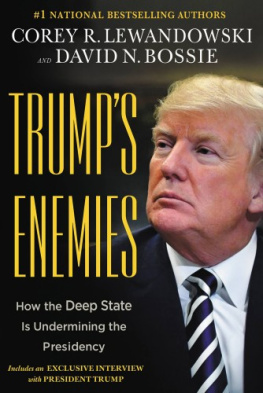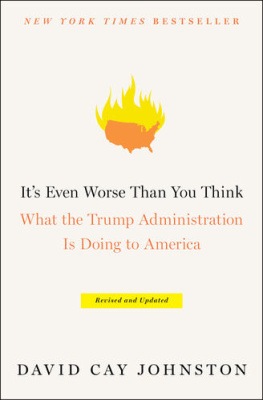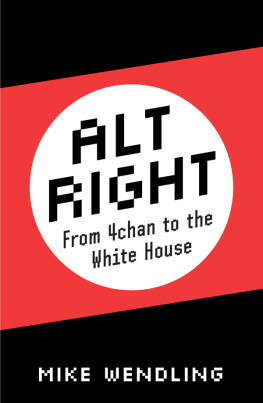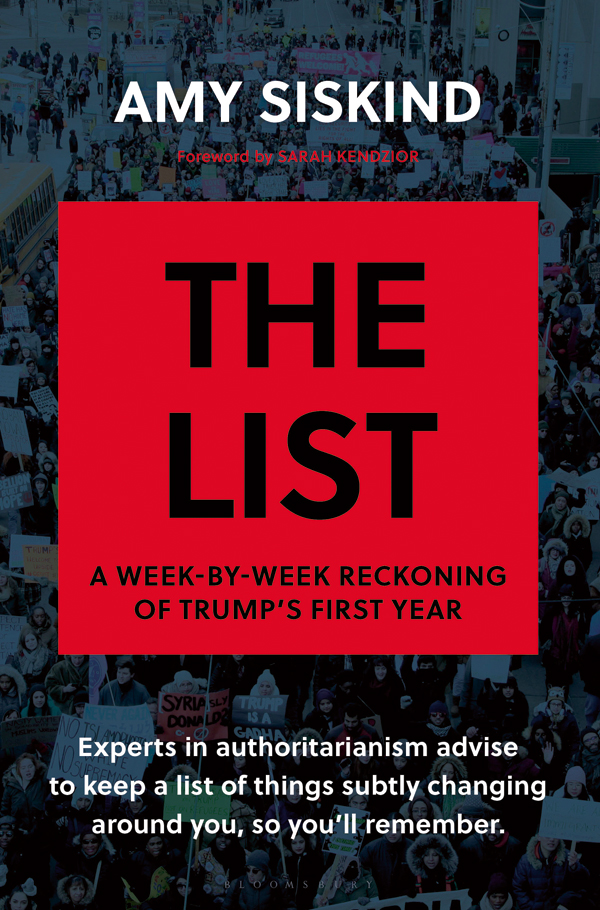Contents
Guide
Pagebreaks of the print version


To the Resistance
In the darkest days, comes the brightest light


CONTENTS
By Sarah Kendzior
On January 22, 2017, two days after the inauguration of Donald Trump, U.S. counselor to the president Kellyanne Conway went on television to make a case for a new concept: alternative facts. Conway was defending lies that Press Secretary Sean Spicer had made the day before about the size of Trumps inauguration crowdlies that could be disproven simply by looking at photographs of the event.
The audacity of Conways claim left most Americans reeling. After all, what is the purpose of lying when one could be so easily caught? And if likely to be caught, shouldnt one be more subtle, rather than contriving a catchphrase that sounds straight out of a George Orwell novel? What many Americans missed is that the audacity of the lie was the point. Lies are not merely false statements but signals of power. Conways goal was not to convince Americans of an alternate narrative but to tell them, We know that you know that were lying, and we dont care, because theres absolutely nothing you can do about it.
If there is a Trump Doctrine, it is written in Alternative Facts. Throughout 2017, the Trump administration unleashed a firehose of falsehoods designed to prompt Americans to frantically search for the truth, in the hope that they would ultimately stop valuing it. The difficulty in merely gathering accurate information under these conditionsmuch less organizing in response to itwas intended to exhaust both the critical thinking and political drive of the administrations opponents. What is the point of speaking truth to power , citizens would ultimately wonder, if power is the only truth?
Though the nomenclature may be new, the tactic is not: Alternative facts have long been a hallmark of authoritarianism, and a propaganda onslaught has never been easier to achieve than it is today. In 1941, Nazi propagandist Joseph Goebbels put forth his theory of the big lie: If you tell a lie big enough and keep repeating it, people will eventually come to believe it. Today the big lie finds new reinforcement in digital media: in twisted narratives invented by state officials, validated through retweets and trending topics, and repeated through aggregated content that often seeps into the mainstream press. The big lie is big not only in its audacity but in its pervasiveness, as armies of trolls work to drown out opposing views and a news media unprepared for autocracy scrambles to catch up.
Thankfully, in 2016, Amy Siskind sought to keep people caught upby writing everything down. Inspired by articles I and other scholars of authoritarian regimes wrote advising citizens to keep track of changes shortly after Trump won the election, Siskind began writing a weekly list of things that were, in her words, not normal. Given that this is the Trump administration, the list started long and ended longer, with Siskind logging one hundred items per week by midyear and surpassing that number by the time 2017 drew to a close.
Trumps election and first year in office were a brutal awakening for many Americans who did not realize how greatly our democracy rested on norms instead of laws. Having been falsely assured that Americas institutions could withstand an authoritarian onslaught, they learned the hard way that checks and balances are only as good as the people willing to enforce them, and that the constitution is but a piece of paper without officials who will honor its principles in practice.
In contrast to all previous presidents, Trump does not appear to recognize the branches of government as separate administrative organs designed to serve the people, but instead sees them as mechanisms of personal power. He treats the attorney general as his private attorney, asked the head of the FBI for a loyalty oath, and demands blind fealty from Republicans in Congress while flatly labeling the Democrats his enemies, often baselessly calling for them to be prosecuted. The United States has always had corruption in government as well as presidents who abused power for personal gain, but we have never had a president who viewed the entire apparatus of government as designed to serve only himself. Previous controversies, like Nixons Watergate, now seem refreshingly manageable.
Throughout his campaign, Trump swore he would make America great again, but never specified a particular era as embodying his vision. In many respects, he combines the worst elements of U.S. history, exposing and exacerbating authoritarian tendencies that have been there from the nations birth, but whichuntil nowfaced staunch and successful opposition in Congress, in law, and in society.
The United States is a country founded on democratic ideas that were radical when first introduced in the eighteenth century and now are taken for granted across much of the world. A respect for empirical truth was critical to the revolution that challenged the myths that had governed aristocratic Europe for centuries. The most radical truth entailed the equality of man, that inherited position or wealth should not confer privilege, that people had a right to self-government. Americas progress toward these ideals has certainly been halting. The country was established on stolen land and built by black slaves, and it went on to enforce anti-democratic, inhumane policies such as World War II internment camps, Jim Crow, and the Red Scare purges of the McCarthy era. But throughout the centuries, the United States has generally moved in the direction of freedom and progress. Trumps words and actionshis disdain for truth, his tolerance of Nazis, his targeting of black citizens, his ban on Muslims, his abandonment of Puerto Ricansare not entirely without precedent, but his wholesale and public rejection of basic constitutional principles have pulled America into a new era of chaos and overt white supremacy in the executive branch.
Trump rose to power by exploiting not only Americas most vicious elements, but its most vulnerable. By the time Trump launched his campaign, the United States was in its seventh year of recovering from the Great Recession. The recovery was not distributed equallyexpensive coastal cities thrived while much of the Midwest and South was drained of jobs and resources. Nationwide, wages continued their forty-year stagnation, costs of living soared, and income inequality rivaled that of the Gilded Age. Historically, demagogues thrive in times of economic desperation, and Trump was no exception, nor was the United States immune to his con.
Trump had spent his career as a businessman preying on the vulnerable and cheering events such as the 2007 housing bubble collapse as an opportunity to swoop in and make a profit. He viewed the presidency the same way, and operates like a typical kleptocrat, using his position as president to enrich his familys businesses while passing bills designed to exacerbate poverty and obliterate the safety net. Again, some of these policies are not newAmerica has always stood out from other modern democracies in its refusal to provide health care and other basic social servicesbut they have never been put into practice in such a blatantly authoritarian matter, with citizens unable to read the laws their representatives pass and representatives seemingly utterly divorced from the publics very negative reaction.


